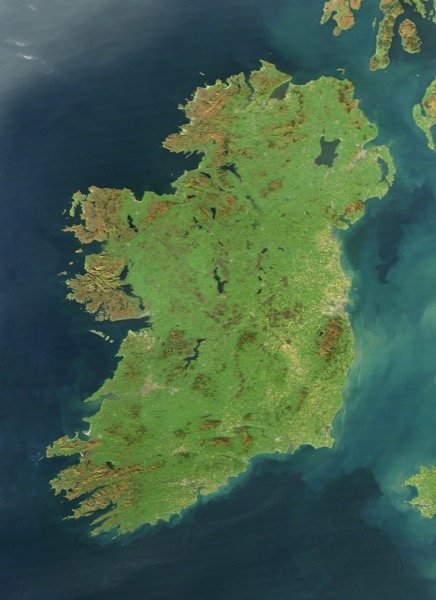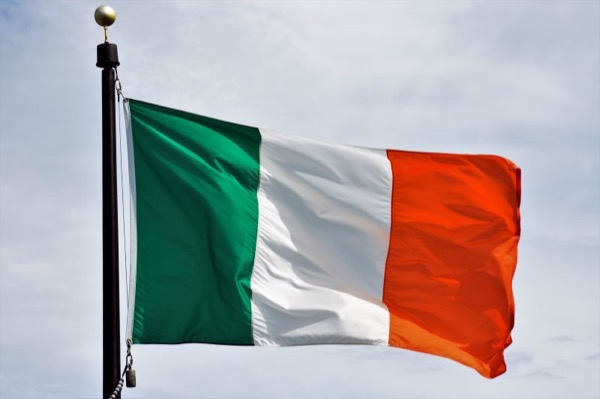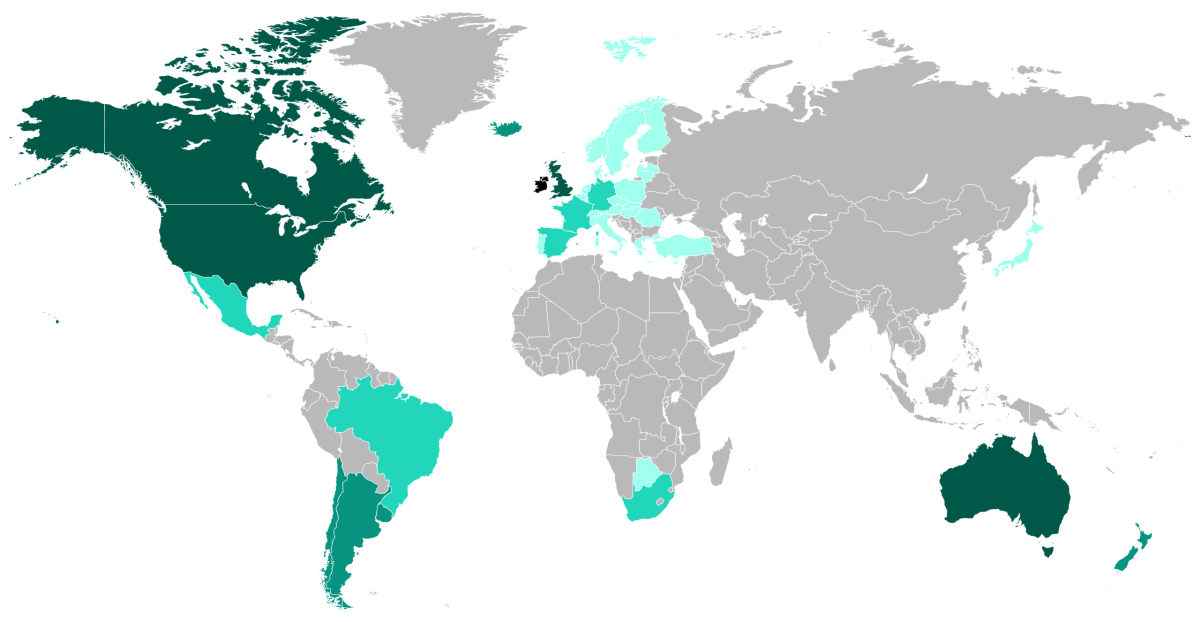Irish Diaspora: Discover where all 7 million of them are now!
The ‘Irish diaspora’ is a term that first cropped up in 1954, but that didn’t really become a household phrase until the 1990’s.
It is a way of referring to ethnic Irish people and their descendants who live outside the island of Ireland.
It is difficult to accurately measure the size of the Irish diaspora worldwide, for a number of reasons, including the fact that many people have a mixed ancestry which isn’t always easily recordable or traceable. However, it is estimated that the Irish diaspora population is around the 70 million mark!
One of the most popular destinations for Irish migration was for a long time the United States. The Irish-American community is huge and proud to this day, but Britain has since become the place with the highest percentage of Irish immigrants. There are a number of reasons for this that we will explore further down.
If you are yourself one of the many with Irish roots who is living outside of the Emerald Isle, we would love to hear from you! Where are you now, what took you there and how can we persuade you to come back and visit us?

The phrase ‘Irish diaspora’
- ‘Diaspora’ (from the Greek word ‘to scatter’) is defined as any group migration or flight from a country or region; or any group that has been dispersed outside its traditional homeland.
The first recorded mention of the phrase ‘Irish diaspora’ was in a 1954 book called ‘The Vanishing Irish’. But it was not until the 1990’s, thanks to a famous address by President Mary Robinson, that the phrase came to be more widely used to describe Irish emigrants and their descendants around the world.
Robinson, the seventh president of Ireland (and incidentally the first female president of Ireland), reached out to the people worldwide who can claim Irish descent in 1995 during her address to the Joint Houses of the Oireachtas. She said:
“The men and women of our diaspora represent not simply a series of departures and losses. They remain, even while absent, a precious reflection of our own growth and change, a precious reminder of the many strands of identity which compose our story.”
From then on ‘Irish diaspora’ became a commonly used phrase. So commonly used that the Irish government even legally defined it. They said its to mean ‘all persons of Irish nationality who habitually reside outside of the island of Ireland.’ This includes Irish citizens who have emigrated abroad and their children, who are Irish citizens by descent under Irish Law.
This legal definition limits the Irish diaspora to around 3 million people. But the usage of the term is not limited to the legal definition, accounting for the many millions of people with an Irish heritage that stretches further back than this and feel a kinship with the nation.
Whilst the government now acknowledge this wider usage of the term and claim to ‘cherish its special affinity with people of Irish ancestry living abroad’, they still do not acknowledge legal obligations for such people.

There are also some people of Irish descent who are living abroad but who reject inclusion in an Irish diaspora. They may see the diaspora label as something used by the Irish government for its own purposes, or they may just choose to define their identity in another way.
Irish Emigration
Emigration has for a long time been a constant theme in the development of the Irish nation. Since 1700 around 9 or 10 million people born in Ireland have Emigrated. This number seems especially huge when you consider that even at it’s peak population in the 1840s, Ireland was only home to around 8.5 million people and nowadays only around 4.9 million.
This emigration has had both positive and negative impacts on Ireland. On the one hand, money sent home from those working abroad has allowed the economy to prosper in difficult times. But at the same time, how could the country not mourn the loss of all the talented Irish youngsters it has lost to other places.
The Irish diaspora though must be thanked for the wonderful reputation the Irish have acquired all around the globe. Through hard work, social integration and a little bit of Irish luck, those living and working and living elsewhere have spread the ethos of their homeland far and wide.
But why have so many Irish emigrated?
Historically, in I guess what could be described as the earliest known Irish emigration, the Irish had form for raiding and settling along the West Coast of Roman Britain. A number of them were recruited into the Roman armies, but it wasn’t until the withdrawal of the Romans that the Irish really started to increase their foothold in Britain. It was these Irish colonies that formed the basis for modern Scotland!
Irish emigration to western Europe, and especially to Great Britain, has continued at a fairly steady pace ever since then. For over a century the Irish have crossed the sea, for a number of reasons. Sometimes seeking employment or more fruitful lands, sometimes on religious pilgrimages and sometimes for political reasons.
Today, the ethnic-Irish are the single largest minority group in both England and Scotland.

The Great Famine of Ireland
The common argument that the mass emigration from Ireland was a ‘flight from the famine’ is inaccurate. As we have outlined above, the Irish had been moving away from their homelands in fairly high numbers for a number of years. But it is probably fair to say that the famine was the final straw in convincing people to move, even if there were several other factors in the decision-making.
The Great Famine was a period of mass starvation and disease in Ireland, which lasted from 1845 to 1852. During this period, about 1 million people died and even more fled the country and settled all over the world, although mainly in Great Britain and North America.
Between 1841 and 1851, Ireland’s population fell by over 2 million, or around 20%–25%. Some towns were affected so enormously that they lost around 67% of their inhabitants between 1841 and 1851!
One of the reasons that we cannot solely attribute the mass emigration of the 19th century to the famine is the fact that even once conditions were better, emigration did not slow down. After the famine was over, the next four years produced more emigrants than there had been during the four years of the blight! Most of these travelled on packet ships but also steamboats and barks.
By 1900 the population of Ireland was about half of its 1840 high and continued to fall during the 20th century. Whilst many still made their way to Britain, there was a degree of discrimination felt there, based on the Irish religion. More was to be gained by immigrating to America from Ireland and the 1848 discovery of gold in the Sierra Nevada was too tempting a lure for many.
Probably mostly thanks to the improvements in Ireland’s economic success, what is now seen as the ‘bad old days’ of high emigration seems to have disappeared. Nowadays less than 18,000 Irish people leave each year and many of these will return to Ireland again.
But there are still those that do leave and settle elsewhere, and there are still many thousands of second and third generation Irish descendants living around the world that consider themselves part of the Irish diaspora.

Britain
When you consider the close proximity to Ireland, it is not really a surprise to learn that 75% of Irish-born people living abroad are in Britain. Although it hasn’t always been the most popular destination for Irish emigrants, in the 19th century that was America. But by 1981 there were four times as many Irish in Britain as in the USA.
At the most recent count, there are also approximately 1.7 million people in Britain who were born to Irish parents, and the third generation Irish community in Britain could be in the region of 6 million! (Third generation meaning that they have an Irish born grandparent).
The movement of people between the adjacent islands of Ireland and Great Britain has ebbed and flowed due to politics, economics and social conditions and changes throughout the years, but the most recent estimate is that around 850,000 people born in Ireland are now living in Britain.
United States
A whopping 10.8% of the total US population claim Irish ancestry – which is in fact the equivalent of 7 times the population of Ireland itself! No wonder the American St Patrick’s Day celebration are so huge and epic!
In the 2000 census it was recorded that there were 156,000 Irish-born people in the US. The States with the largest Irish-American population were California, New York, Pennsylvania, Florida and Illinois. And Irish-Americans were the largest ancestral group in Washington DC, Delaware, Massachusetts and New Hampshire.
Did you know that these 10 famous Americans have Irish roots? You might be surprised at a few on the list!
Australia and New Zealand
The third largest Irish-born population, outside of Ireland of course, can be found in Australia. It is estimated that there are around 74,500 first generation Irish in the country. And a further 11,000 in New Zealand, attracted by the possibility of striking lucky in the gold mines.
Nowadays the Irish Diaspora reside in the land down under of their own free will, but in the 18th and 19th century there were around 45,000 prisoners sailed to Australia from Ireland alongside the 300,000 free emigrants.
Irish Catholic immigrants were responsible for the establishment of a separate Catholic school system in Australia, which now over 20% of the countries children attend.
Canada
The Irish pride is strong in Canada and all, with an impressive 3.8 million residents claiming to have some form of Irish ancestry! As for first generation Irish, there are approximately 28,500 in the country.
Argentina
In the latter half of the 19th century approx 45,000 Irish arrived in Argentina. Of these, around 20,000 settled, with most of the rest moving back to the US.
Today in Latin America some 300,000 to 500,000 are estimated to have some Irish ancestry, most of them living in Argentina, with lesser numbers in Central America, Uruguay and Brazil too.
Mainland Europe
Irish links with the continent go back many centuries, thanks to political and religious pilgrimages starting in the Middle Ages. It is difficult to put an exact figure on the members of the Irish diaspora based across Continental Europe but the best available estimate suggests that the figure is around 500,000!
If you are interested in more detailed facts and figure about where to find the Irish diaspora you can check out this list of countries by population of Irish heritage.
